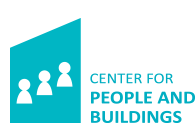Research in Laboratories

Until recently, there was little knowledge available concerning effective, efficient laboratory use. This prompted development of a workplace measuring instrument for labs, in collaboration with TU Eindhoven, Rijksuniversiteit Groningen, Universiteit van Amsterdam, Hogeschool van Amsterdam and RIVM. To this end, two existing tools were adapted to laboratory use: the Work Environment Diagnosis Instrument (WODI) and the Space Utilization Monitor (SUM).
WODI Labs’ focus is on laboratory users. It consists of an online questionnaire distributed amongst users to gain insight into their usage and experience. Often, both laboratories and office spaces are used by employees within the work environment. Issues specific to these buildings include:
- Which spaces are used frequently, and which activities are common?
- What are the advantages of the current accommodations? On which points could a building’s laboratory and office environments be improved?
- To what extent do the accommodations support the work processes?
- How frequently do employees move between the lab and the office, and are they satisfied with the configuration of the spaces?
- How safe do employees feel in the lab?
SUM Labs, the Space Utilization Monitor, maps the utilization and use of the laboratory environment through observation. If applicable, the office environment is included as well.
Benchmark
The results of the WODI Labs and SUM measurements can be compared to those of other organizations.
Dialogue
Experience shows that not only is the collected data useful, but the results also support dialogue between the grounds management and users of the building. After all, a real estate expert can’t always easily assess what spaces and facilities will best support a chemist’s work processes. On the other hand, users of a building may not have a clear idea of the issues involved in real estate development and management.
WODI Labs and SUM Labs may be deployed independently.
When to use it?
WODI Labs may be applied at various times. Before moving or reorganizing, measurements may be used to create a frame of reference (baseline measurement) or as input for a design brief. WODI Labs may also be used after a move or reorganization, to gain insight into the effects of the new accommodations and possible optimization. Finally, periodic measurements can be used to monitor use and experience of the accommodations over longer periods of time.
SUM Labs may also be deployed during various stages of the accommodations process. Lack of space is analyzed in an objective manner, and the possibility of and arguments for alternative accommodations solutions are explored. Sometimes, occupancy rate measurements are used to evaluate if accommodations goals have been reached.
What do I gain?
Results from WODI Labs are often used to solve accommodations bottlenecks using specific interventions. During relocations, the results offer qualitative input for the design brief. They may also be used as a base for accommodations policies, developing a management style, or employee behavior.
SUM Labs shows to what extent laboratories and office spaces are being used efficiently. It also reveals any workplace deficits or surpluses, and provides insight into workplace usage: which activities take place where. Results may lead to modifications to current accommodations, or as input for the design brief when developing a new building.
Furthermore, the results have been shown to be useful as a frame for dialogue between laboratory users and real estate professionals.
How does it work?
WODI Labs is an online questionnaire distributed to all users of the building. The instrument has been standardized to a large extent in order to enable comparison with other buildings or organizations. However, additional questions specific to the organization may also be included to ensure all issues truly important to the organization are addressed. Interviews, group discussions, observation, document analysis and workshops may be used as supplements to validate and explain the results.
With SUM Labs, occupation and activities are registered during one week, for a minimum of 8 times per day per measuring point (taking explicit care not to register personal information about employees). It is essential that all work days within a representative week are measured. To increase the reliability of the results and get a good feel for peak utilization, the two busiest days are remeasured the following week as well. An occupancy rate measurement will not go unnoticed. Therefore, it is important employees are well-informed beforehand. Feedback afterwards is highly recommended as well.
Prior experience
The toolset was developed in collaboration with TU Eindhoven, Rijksuniversiteit Groningen, Universiteit van Amsterdam, Hogeschool van Amsterdam and RIVM. WODI Labs has been deployed at the Douane Laboratorium Amsterdam, ERIBA Groningen and TU Eindhoven, and SUM Labs at Rijksuniversiteit Groningen.
